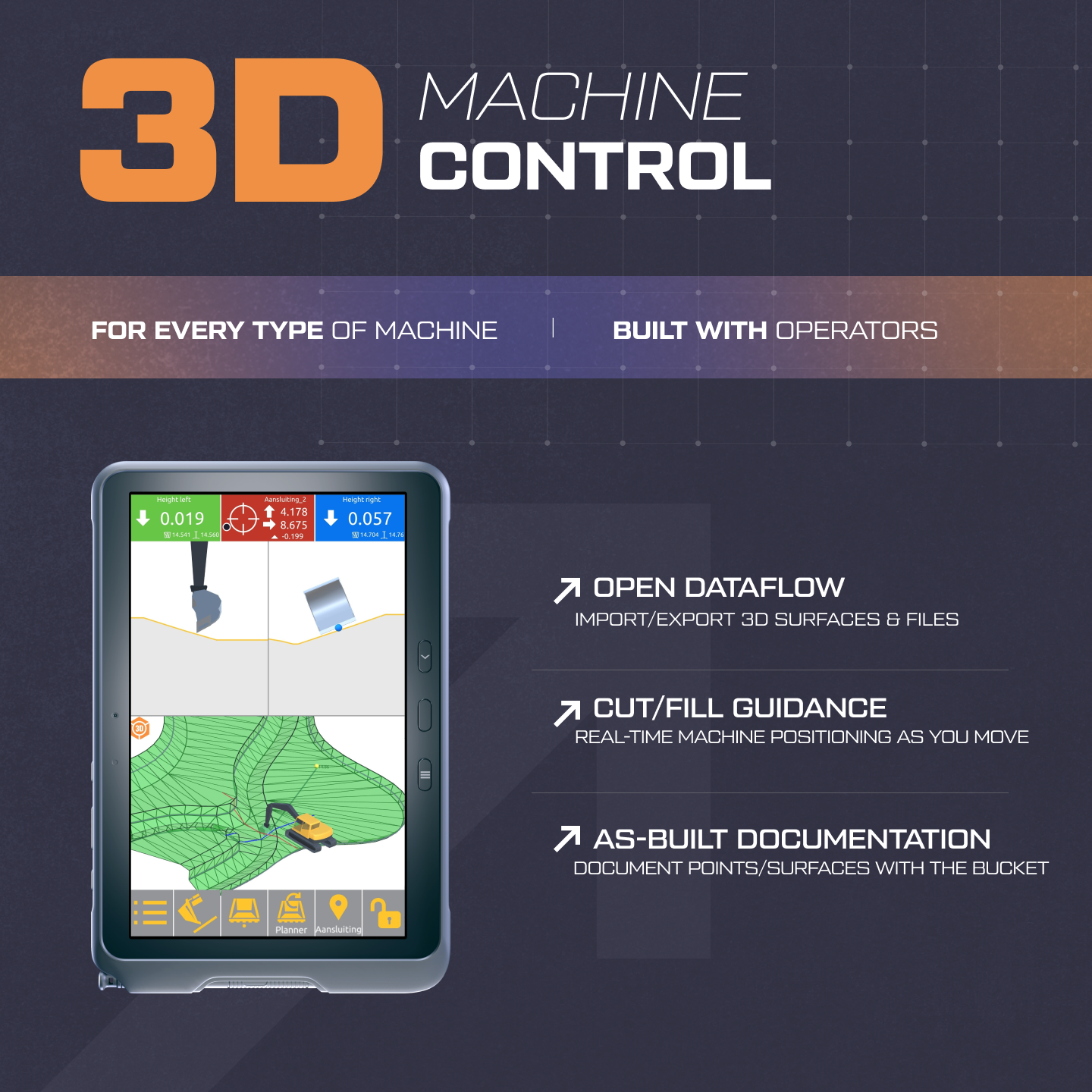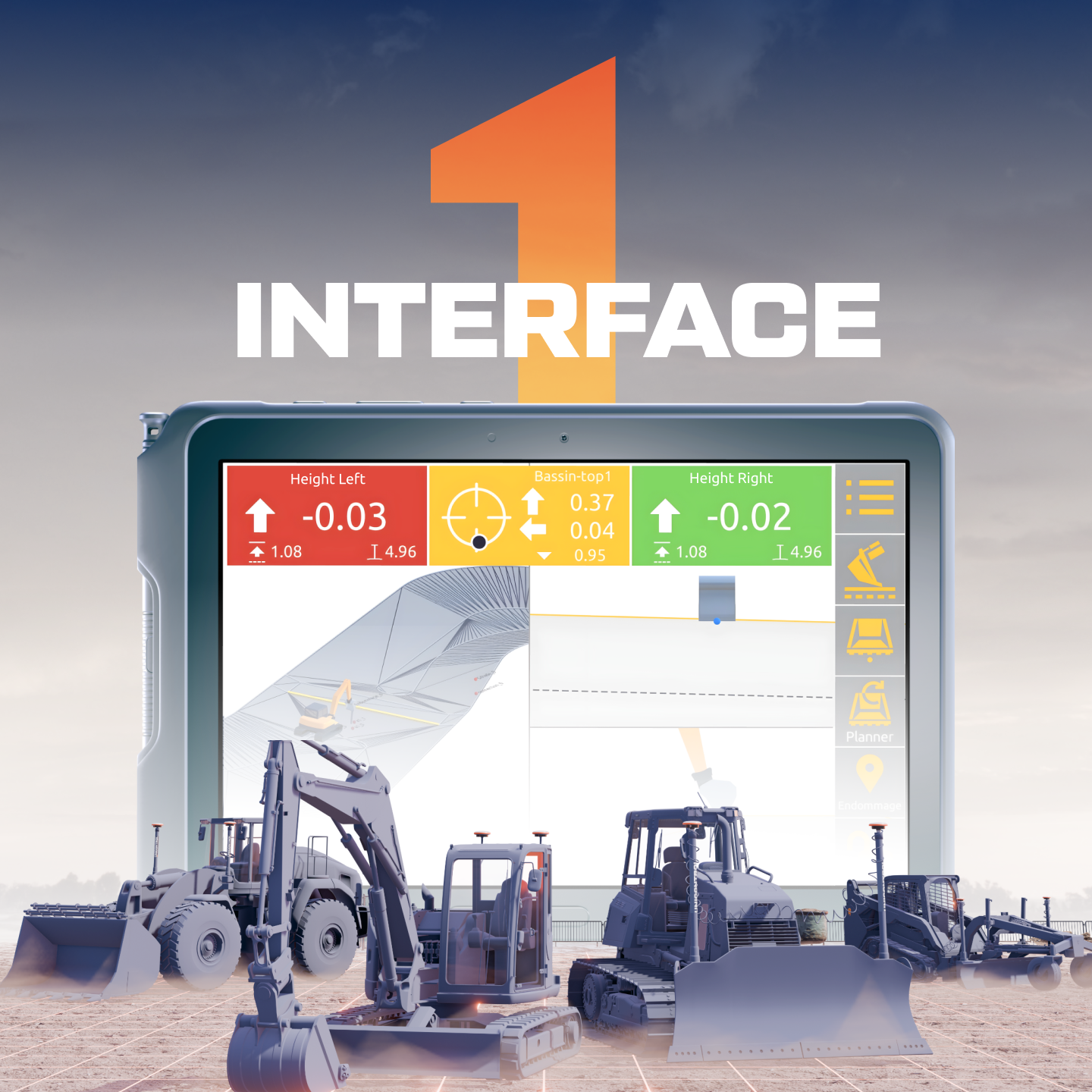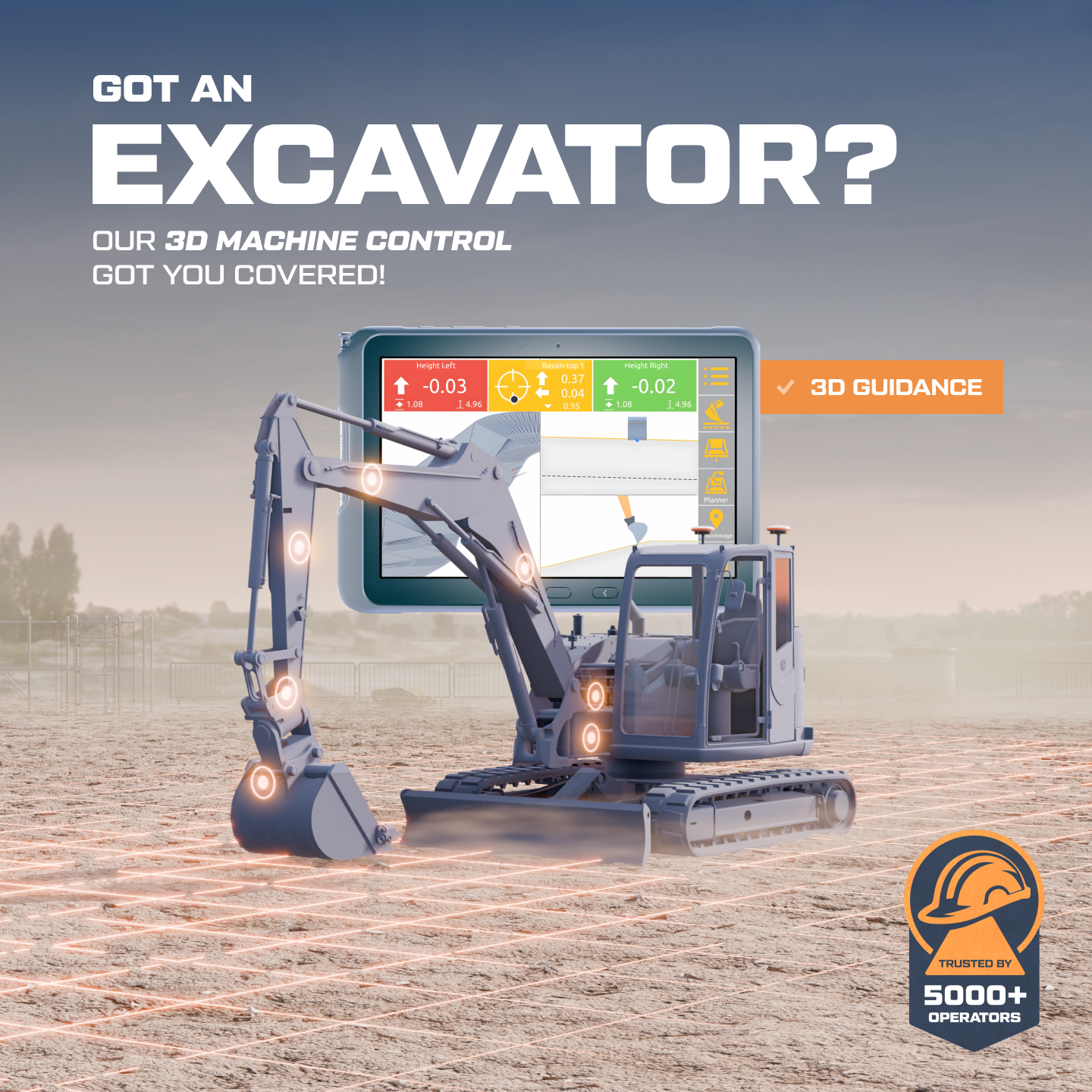A Time Saver You Can’t Ignore:
3D Machine Control vs. Manual Operation
Everyone in the construction industry agrees: 3D machine control makes projects faster. But how much faster is it, really?
We put this to the test and found a 51% time saving.
But here’s the big question: what does that mean for your bottom line?
For all stages, the critical difference is that the operator with 3D machine control can monitor depth and grade directly from the cab. The other operator had to leave the machine frequently to control depth and grade with a stick and a rotating laser.
With 3D machine control, the operator can easily manage each stage - from staking out points to creating the sloped surface and the final 20cm offset - right from the cab. This is the key to the remarkable time savings.


Rules of the Field Test: Hard Hats On, Hands On the Levers
We kept the field-test simple: Same tools, same task, different workflows.
By standardizing all variables, we focused on one key differentiator: 3D Machine Control.
While each company has different investments and jobtypes, the stages of the field-test reflect tasks found in many construction jobs:
1. Preparing the work area
2. Digging the foundation
3. Controlling foundation measurements
Using 3D machine control, all phases become more efficient, leading to a noticeable time saving
51% Faster: How 3D Machine Control Turns Efficiency into Earnings
To answer the question of what the 51% time savings mean for your bottom line. While the specifics will vary depending on your investment and jobtype, one thing is clear: 3D machine control is a smart investment that turns time into a healthier bottom line.
It’s not just about saving time - it’s about turning that time into profit. 3D machine control does not change the way operators work. It minimizes the time and errors of doing the manual tasks they already know, leading to a more profitable bottom line.

Shop All of the Jobsite Technology Products

